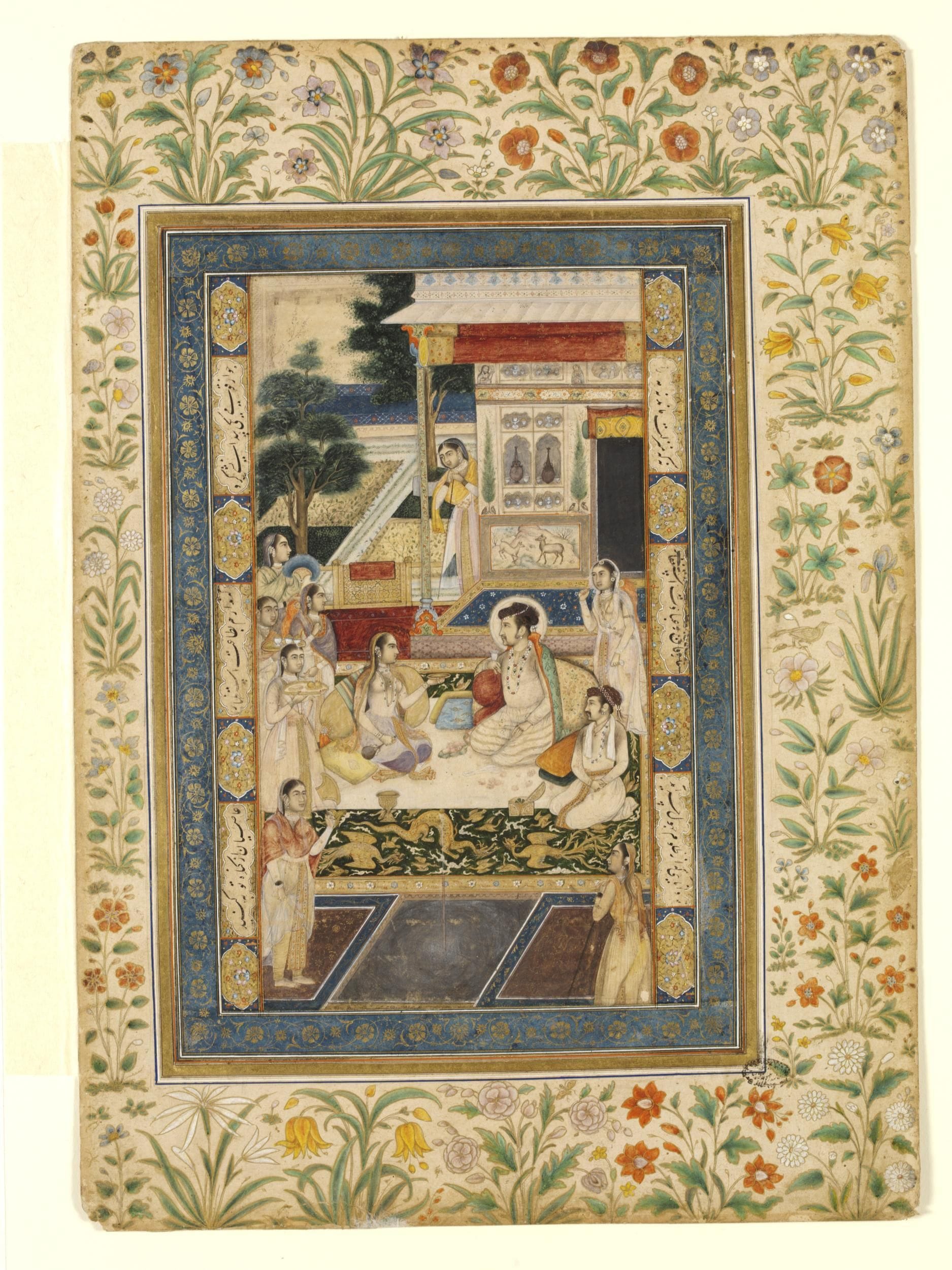Prince Khurram, born into Mughal royalty, rose to become the Emperor Shah Jahan, forever etching his name in history with the Taj Mahal. But his journey was far from a fairytale. This article delves into the transformation of Prince Khurram into the iconic Shah Jahan, exploring his early life, his rise to power, his architectural achievements, and the complex realities of his reign. Shah Jahan’s reign, though marked by architectural splendor, was also shadowed by familial conflict and a relentless pursuit of power. The transformation from Prince Khurram to Shah Jahan reflects not only a change in title but a journey of ambition, love, and loss. More than just a name change, the ascension of Prince Khurram as Shah Jahan symbolized a pivotal moment in Mughal history.
The Early Life and Rise of Prince Khurram
Born on January 5, 1592, Mirza Shahab-ud-Din Muhammad Khurram was the son of Emperor Jahangir and Princess Jagat Gosain of Jodhpur. From a young age, he was groomed for leadership within the Mughal court, demonstrating considerable military talent and intellectual prowess. This early promise earned him the favor of both his father and his illustrious grandfather, Akbar the Great. In 1612, his marriage to Arjumand Banu Begum (later known as Mumtaz Mahal) further solidified his position, aligning him with the influential Nur Jahan clique. This marriage wasn’t merely a love match; it was a strategic alliance with far-reaching political implications. Want to know more about Princess Elisabeth Albertine of Saxe-Hildburghausen? Click the link to learn more about her.
Military Campaigns and Growing Influence
Khurram’s military successes, especially in the Deccan campaign against the Lodis in 1617, earned him the title “Shah Jahan” (Glory of the World) from his father. This recognition not only highlighted his growing prowess but also subtly hinted at his future destiny. However, the path to the throne was rarely smooth within the Mughal dynasty.
Rebellion and Reconciliation
In 1622, driven by ambition and perhaps a desire to preempt any maneuvers by Nur Jahan to favor other potential heirs, Khurram rebelled against Jahangir. This act of defiance speaks volumes about the simmering tensions within the Mughal court. The rebellion, while ultimately unsuccessful, underscores the complex dynamics between father and son, ambition and loyalty. A reconciliation eventually followed, suggesting a pragmatic approach to maintaining stability within the empire.
The Ascension of Shah Jahan
Upon Jahangir’s death in 1627, a power struggle ensued. Khurram faced off against his half-brother, Shahryar Mirza, for the ultimate prize: the Mughal throne. Emerging victorious, Khurram formally adopted the title Shah Jahan, marking a pivotal moment in his life and in Mughal history. This was more than just a name change; it was the culmination of years of preparation, ambition, and political maneuvering.
Consolidating Power
Shah Jahan’s early reign was marked by decisive actions to secure his position. He imprisoned his stepmother, Nur Jahan, neutralizing a powerful political rival. He also ordered the execution of his half-brothers, eliminating any potential threats to his rule. These actions, while harsh, reflect the realities of power consolidation in the Mughal era.
The Architectural Legacy of Shah Jahan
Shah Jahan’s name is synonymous with architectural grandeur. His reign witnessed a flourishing of Mughal art and architecture, culminating in the creation of some of the world’s most iconic structures. The Taj Mahal, built as a mausoleum for his beloved Mumtaz Mahal, stands as a testament to his enduring love and a masterpiece of Mughal artistry. The Red Fort in Delhi, a symbol of imperial power, and the Jama Masjid, one of India’s largest mosques, further showcase his vision and patronage. There is ongoing research into the architects and artisans involved, slowly unveiling the collaborative efforts behind these magnificent projects. Think about enrolling your child at Phillips Exeter Academy but not sure about the tuition fee? Click the link provided to find more details.
Patron of the Arts and Culture
Shah Jahan’s influence extended beyond architecture. He cultivated a vibrant cultural scene at his court, attracting poets, musicians, painters, and scholars from across the empire. This patronage likely contributed significantly to the flourishing of art and literature during his reign. Some scholars suggest that Shah Jahan saw art and culture as essential tools for projecting imperial power and prestige.
The Twilight Years: Conflict and Loss
Shah Jahan’s later years were marked by tragedy. A bitter succession struggle erupted among his sons, mirroring the court intrigues of his own youth. Aurangzeb, his third son, ultimately prevailed, imprisoning his father in Agra Fort. Shah Jahan spent his final years gazing upon the Taj Mahal, a poignant reminder of his lost love, while confined within the walls of the fort. He died in 1666 and was laid to rest beside Mumtaz Mahal within the Taj Mahal.
The Complex Legacy of Shah Jahan
Shah Jahan’s legacy is multifaceted and complex. He was a visionary builder, a patron of the arts, and a powerful emperor. However, his reign was also marked by ruthlessness and familial conflict. His story continues to fascinate historians, prompting ongoing research that reveals new insights into his motivations and the complexities of his era.
Are Prince Khurram and Shah Jahan the Same?
Yes, Prince Khurram and Shah Jahan are the same person. “Shah Jahan” was the imperial title adopted by Khurram upon his ascension to the Mughal throne.
Did Shah Jahan Marry After Mumtaz Died?
While Shah Jahan’s love for Mumtaz Mahal is legendary, historical accounts suggest he likely had other wives and consorts, both before and possibly after her death. Polygamy was common practice among Mughal emperors, often for political and dynastic reasons. While the Taj Mahal immortalizes his love for Mumtaz, it’s important to remember the complexities of Mughal imperial life and avoid imposing modern perspectives on historical figures.
Why did Prince Khurram revolt against Jahangir?
Khurram’s rebellion against his father, Emperor Jahangir, was a complex event likely driven by a combination of factors. These probably included his own ambition, concerns about the influence of Nur Jahan (Jahangir’s wife), and the strategic importance of the Deccan, which Khurram controlled. The rebellion was a pivotal moment in Khurram’s life, shaping his future reign as Shah Jahan.
- Unveiling Bernhard Caesar Einstein’s Scientific Achievements: A Legacy in Engineering - July 15, 2025
- Uncover who is Jerry McSorley: CEO, Family Man, Business Success Story - July 15, 2025
- Discover Bernhard Caesar Einstein’s Scientific Contributions: Unveiling a Legacy Beyond Einstein - July 15, 2025
















1 thought on “From Khurram to Shah Jahan: The Journey of a Mughal Prince”
Comments are closed.